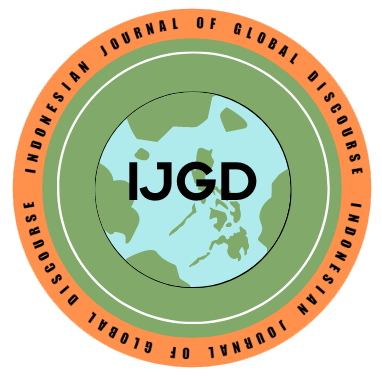Pandangan Hak Asasi Manusia Terhadap Kebijakan Two Child Policy Presiden Xi-Jinping
DOI:
https://doi.org/10.29303/ijpss.v3i2.81Keywords:
Human Rights, Negative Liberty, People’s Republic of China, Positive Liberty, Two Child PolicyAbstract
People’s Republic of China (PRC) is one of the biggest countries in terms of its population. Which was the result of its people’s high fertility rate. The high rate of fertility creates an influx of birthrate, thus, increasing the population by a lot. But at the same time, it raises a new problem: China's economy can’t sustain the overly-grown population. China came with a new two-child policy, a policy dedicated to limiting the number of children a household could give birth to, a solution to cut out the influx of population. This, of course, sparked a wave of criticisms from the Western world. The West viewed; China’s policy as a breach of Human Rights as it limits its people’s freedom to give birth. This study uses a qualitative method which is descriptive analysis. The concept used is the concept of individual freedom in the form of Positive Liberty (positive freedom) and Negative Liberty (negative freedom). The results of the study, namely the Two-Child Policy, actually hurt human rights because people were forced to pay taxes if they had a second child with a value of almost 100 million rupiahs which eventually encouraged women to have abortions and sterilization. This policy also creates problems for those who wish to have more children. This policy is believed to be President Xi Jinping's effort to anticipate the slack in the Chinese labor supply due to the declining productive age population, so basically, this policy was issued not to side with human rights, but to safeguard China's economic interests
References
Astari, M. K. (2019). Upaya Tiongkok dalam Mengatasi Bride Trafficking [Universitas Airlangga]. https://repository.unair.ac.id/82012/
Bakry, U. S. (2017). Metode Penelitian Hubungan Internasional. Pustaka Pelajar.
Budiardjo, M. (2007). Dasar-Dasar Ilmu Politik. PT Gramedia Pustaka Utama.
Citradi, T. (2019, November 13). Kisah China: Dulu Kumuh Kini Jadi Raksasa Ekonomi Baru. CNBC Indonesia. https://www.cnbcindonesia.com/news/20191113145204-4-115001/kisah-china-dulu-kumuh-kini-jadi-raksasa-ekonomi-baru
Cooke, F. L. (2017). The Two-Child policy in China. In D. Grimshaw, C. Fagan, G. Hebson, & I. Tavora (Eds.), Making Work More Equal: A New Labour Market segmentation approachpproach (1st ed.). Manchester University Press. https://doi.org/10.7765/9781526125972.00020
Elviana, S. N. (2014). Perlindungan Hak untuk Melanjutkan Keturunan dalam Surrogate Mother. Jurnal Hukum Universitas Brawijaya, 1–24. http://hukum.studentjournal.ub.ac.id/index.php/hukum/article/view/729
Gitaningrum, I. (2018). Pengaruh Prinsip Konfusianisme terhadap Politik Luar Negeri Tiongkok dalam Menghadapi Gagasan Universalitas HAM Barat. Indonesian Journal of International Relations, 2(2), 51–67. https://doi.org/10.32787/ijir.v2i2.60
Hasyim, D. (2008). Perencanaan Pembangunan Berwawasan HAM Menuju Pembangunan Berpusat Pada Rakyat. Unisia, 31(68), 1–19. https://doi.org/10.20885/unisia.vol31.iss68.art3
Husnah, W. (2016). Efek Kebijakan Satu Anak terhadap Kehidupan Perempuan di Tiongkok: Sebuah Ironi. Jurnal Kajian Wilayah, 7(2), 145–158. https://doi.org/10.14203/jkw.v7i2.749
Jacques, M. (2011). When China Rules The World: Kebangkutan Dunia Timur dan Akhir Dunia Barat (N. Cholis & J. Sumarwotoz (trans.)). Kompas.
Li, J. (2009). Confucianism. In D. Pong (Ed.), Encyclopedia of Modern China (pp. 347–351). Charles Scribner’s Sons. https://www.researchgate.net/publication/303286810_Confucianism
Lieming, F. (2019). Will China’s “Two-child in One Family” Policy to Spur Population Growth Work? Population and Economics, 3(2), 36–44. https://doi.org/10.3897/popecon.3.e37962
Lu, D. (2018). China’s Selective Two-Child Policy and Its Impact on the Marriage Market. Beiträge Zur Jahrestagung Des Vereins Für Socialpolitik 2018: Digitale Wirtschaft - Session: Labor Markets I, No. D17-V3, ZBW - Leibniz-Informationszentrum Wirtschaft. http://hdl.handle.net/10419/181586
McFarlane, S. (2010). Human Rights and China’s Family Planning Policy: Direct and Indirect Effects on Women [Universitas Osloensis]. https://www.jus.uio.no/smr/english/about/programmes/china/activities/norway/MA_Thesis_McFarlane.pdf
National Bureau of Statistics of China. (2020, June 1). Statistics. http://data.stats.gov.cn/english/
Rošker, J. S. (2015). Modern Confucianism and Chinese Theories of Modernization. Philosophy Compass, 10(8), 510–522. https://doi.org/10.1111/phc3.12241
Setiyono, B. (2018). Model dan Desain Negara Kesejahteraan. Nuansa Cendikia.
Soetjipto, A. (2000). Hak Asasi Manusia dalam Kebijakan Luar Negeri Cina. Global: Jurnal Politik Internasional Universitas Indonesia, 1(1), 35–43. https://doi.org/https://doi.org/10.7454/global.v1i1.191
Suratman, M. (2014, April 15). Memperjelas Konsep Kebebasan Individu. Kompasiana. https://www.kompasiana.com/mamansuratman/54f79dcea33311c6198b45aa/memperjelas-konsep-kebebasan-individu
Tan, H. (2019a, April 14). Kontroversi Kebijakan 2 Anak (Two Child Policy) di Tiongkok: Anak Ke-2 Harus Dipajak! Tionghoa.Info. https://www.tionghoa.info/kontroversi-kebijakan-2-anak-two-child-policy-di-tiongkok-anak-ke-2-harus-dipajak/
Tan, H. (2019b, April 17). Kebijakan Dua Anak Tiongkok (Two Child Policy): Beban Ekonomi Atau Kebahagiaan. Tionghoa.Info. https://www.tionghoa.info/kebijakan-dua-anak-tiongkok-two-child-policy-beban-ekonomi-atau-kebahagiaan/
Wang, K., & Yu, H. (2018). The Influence of the Two-child Policy on Urbanization in China. Journal of Geographical Research, 1(1), 32–42. https://doi.org/10.30564/jgr.v1i1.160
Zhao, Y. (2020, January 22). China’s Two-Child Policy. Bloomberg. https://www.bloomberg.com/quicktake/china-s-two-child-policy














